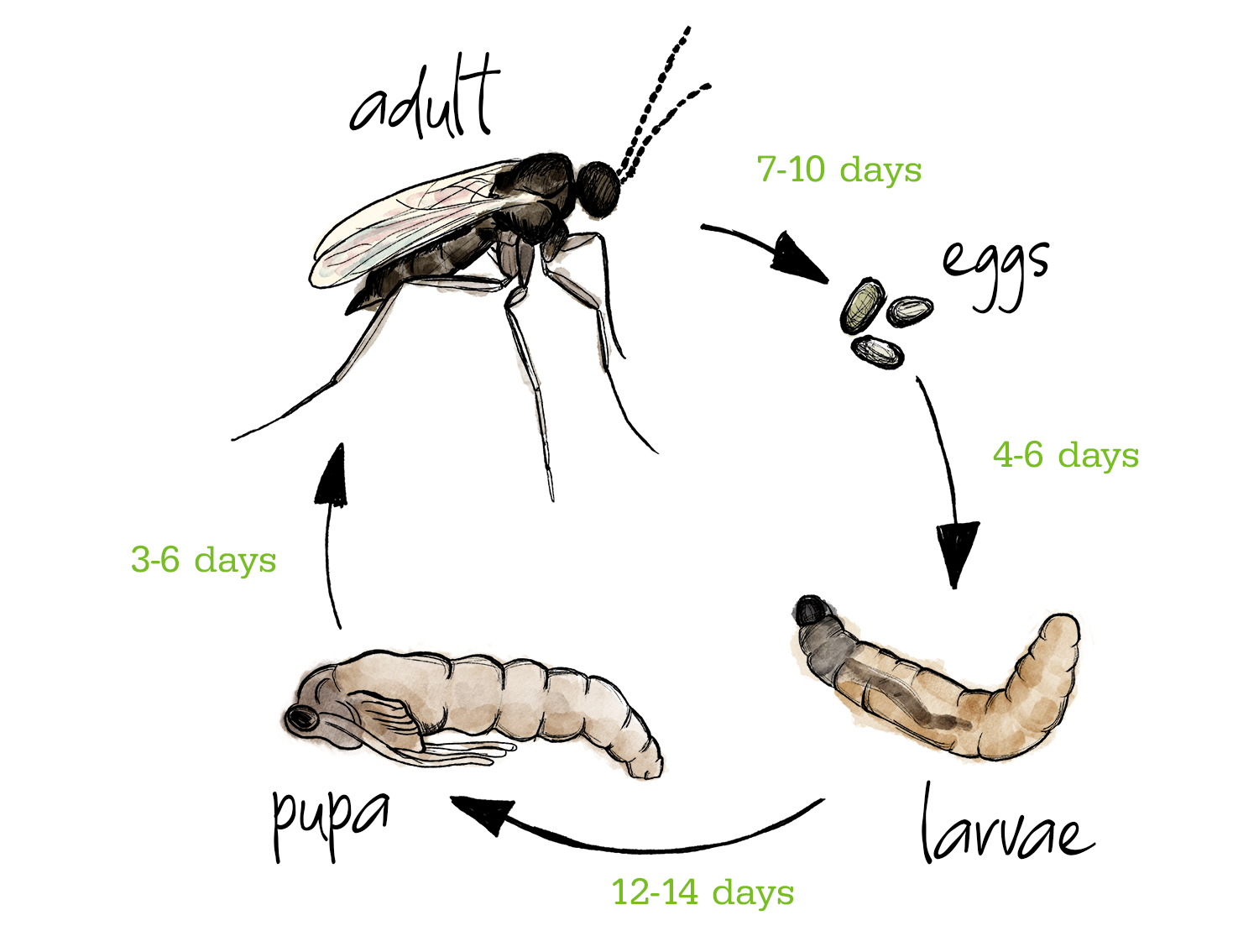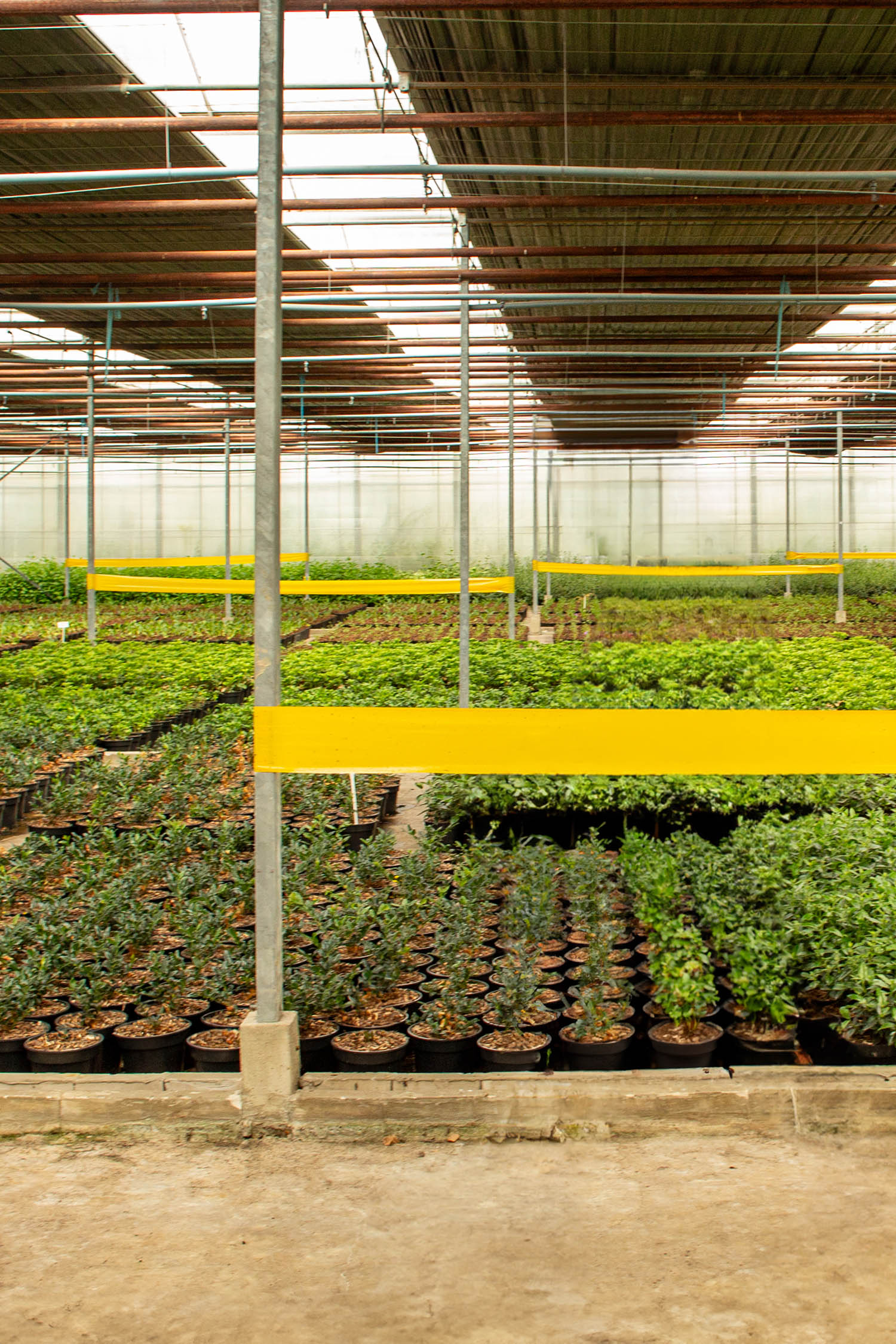Pest Focus: Sciarid Flies
How to spot and treat the troublesome plant pest
Sciarid flies (Bradysia), or otherwise known as fungus gnats, are part of the Sciaridae family, which is made up of over 250 species in total. They are often seen within the damp compost of soft cuttings and seedlings in greenhouses, as well as houseplants. Thriving in moist, warm, and humid conditions with high levels of organic matter, and being attracted to decomposition and decay, sciarid flies bring problems to propagation areas all year round.
Some species in the UK feed on rotting organic matter; these cause no harm and are part of our natural ecosystem. However, some are troublesome, as they breed in large numbers within damp compost and can cause significant damage to soft cuttings and seedlings all year round. Usually, no damage will occur to healthy, mature plants.
Adult sciarid flies live on the surface of compost and can be seen flying slowly around plants; for this reason, they are generally easy to detect. Although they don’t directly harm plants, they can unfortunately cause indirect damage by encouraging the spread of various diseases, such as Botrytis cinerea (grey mould), Verticillium dahlia (verticillium wilt), and Fusarium oxysporum (fusarium wilt). Their young feed on fungi, algae, and plant roots, and usually cause the most damage to plants by damaging root structures.
What is the life cycle of a sciarid fly?
The sciarid life cycle has four stages which last for around 28 days in total. These comprise of the egg, four larval instars (larvae), pupal instar (pupa), and the adult. Sciarid adults measure around 1 to 5mm in length, with fairly long legs and a small head. They are grey-black in colour and have long antennae, with clearly veined wings. Their protruding antennae help to identify a specific sciarid fly infestation. Female adults are generally larger in size than males. Adult females deposit their eggs on the surface of the growing media, and in ideal conditions, these can hatch within a few days.
The eggs of sciarid flies are tiny—around 0.1mm to 0.25mm. They are yellow-white and can be found on the surface, near plant roots. The larvae are legless and white in colour, whilst being slightly translucent. They have a black head with mouth parts that allow them to bite and chew, and they can grow up to around 5 to 12mm in length. The pupae are white and turn yellow-brown over time

The Sciarid Fly life is approximately 28 days at 18°C

Yellow sticky fly traps at Fresh Acres Nursery
How to control sciarid flies
There are many different methods for controlling the population of sciarid flies. As a preventive, careful watering and hygiene methods can be adopted around the nursery, and early application of biological control methods is highly recommended to prevent an infestation, or to keep it under control. These methods can be used in combination with one another to increase efficiency, if it appears that the infestation is becoming troublesome.
Yellow sticky fly traps can be a useful control method in greenhouses, and are great for avoiding the use of harmful chemicals. The traps are coated in glue and placed near plants where the adult flies are becoming a problem. The insects get stuck to these traps, and eventually die. This action helps to break the lifecycle of adult sciarid flies. These should not be hung outside as they can trap butterflies and hoverflies.
Hypoaspis miles, or scientifically known as Stratiolaelaps scimitus, is a small, light brown predatory mite that helps to biologically control sciarid flies, as well as other pests, such as root weevils and root aphids. It inhabits the soil, as well as the area around the stem of the plant, and feeds on sciarid larvae.
Another biological control method is Atheta (Dalotia coriaria)—a predatory beetle that controls the sciarid population by aggressively and actively feeding on sciarid larvae. It is small and long in shape, with short wings and a brown body. It is placed on the surface of the plant substrate and will quickly start to search for prey.
A pathogenic nematode, scientifically known as Steinernema feltiae, is another useful biological control method for sciarid flies. The nematode is watered onto growing media, where It helps to control sciarid larvae by entering through a natural opening, such as the mouth. It then feeds on the larvae and produces a natural bacterium that eventually kills it.
Biological pest control methods, such as those mentioned above, are environmentally friendly alternatives to using chemicals, such as pesticides and fungicides. These methods are either low or non-toxic, and can degrade quickly, without leaving residues. We care about the pest control methods we use, and are increasing our use of biological pest control methods, whilst reducing any chemical use across the nurseries. We are in the process of trialling various methods to control pest populations in the most environmentally friendly way, and our goal is to reduce our pesticide use by 50%. For more information about biological pest control and the products we are trialling, head to our Biological Pest Control blog.
If you’d like to discover more about our sustainability initiatives, please visit our Sustainability page.

